Looking out and away. Paris- Versailles.
An old mansion and a once hospital transformed by art.
Two exhibitions have captured my mind and imagination lately and I wanted to share them with you here. Not only the quality of presented work was exquisite but both exhibitions offered an opening into a different space, a portal from a Parisian (or Versailles) street into a different world.
At the moment that I’m writing this both exhibitions have closed. However the artistic work exposed in both can be seen in the city- and of course on line.
The first exhibition took place over only 4 days in an old mansion situated rue de l’Université in the 7th arrondissement. In 1728, the mansion was called "hôtel de Guise" but today the old building doesn’t have a name. It is privately owned but not lived in on a permanent basis. The mansion is however being regularly rented out for exhibitions and fashion shows ( the latter makes sense when one sees the majestic stairs).
I didn’t find a lot of information about the mansion and its history on line (I made a note to myself to try and do so in a library and archives). But exploring the house- behind the gorgeous fabrics and tapisseries that were exposed and that protected its wounds- one could still see some traces of its history.
It was clearly once a rich and fashionable household with the reception rooms at the first floor, the servants quarters and stables. It was interesting to observe that the intricately wrought iron railing of the stairs, becomes much simpler after the first floor- there was no more need to impress. Later the building has become a home for a well to do family- the elevator that was installed attests to the financial ease. The rooms at the « family » floor were rearranged with partitions. The later on added doorways are particularly narrow. You almost need to go in sideways. On one of the walls- I found the picture online as the wall itself was covered with fabric at the time of my visit- the height of the children of the family was marked: the years go from the 20’s to the 60’s. The children have grown, the household has gone through two world wars. Where is the family now? How did the mansion achieve such a dilapidated state?
To see the second exhibition one had to leave Paris for Versailles. The chapel of what used to be the Royal Hospital has become a space that hosts temporary exhibitions. This old building has been abandoned between 1980’s and 2010- a newly built hospital having replaced it. In 2013 the renovations took place and the hospital quarters have become apartments, as well as office spaces. Contrary to the old mansion rue de l’Université the building is sparkling new. I’m wondering however what memories live under these coats of paint.
The two spaces - similar, yet different- hosted two artists, each with his own signature style. In Paris, the Pierre Frey Designer House has transformed the space with his fabrics, carpets and furniture, showing his new collection- Deserts. In Versailles, the French artist Duy Anh Nhan Duc exposed his experiments with natural dies and wood.
That use of natural materials is something that tied the two exhibitions together, as well as the palette of subdued earthen colours chosen by the artists.
In 1935 Pierre Frey has founded an eponymous Designer House focused on creation of textiles. It has since stayed a family business and is run today by his son, Patrick Frey (whom I came across at the exhibition!). The magical universe of the House is created in a relatively small workshop, an hour away from Paris by 25 craftsmen that it employs.
Duy Anh Nhan Duc is a self-taught artist, born in Vietnam in 1983, who lives and works in France. His work is nourished and inspired by Nature. In no way does this blanket statement give justice to his delicate creations, such as the compositions of dandelion seeds. The delicate and fragile work of the artist is opposed by his wood carvings. They are massive but also respectful of the original form of the tree trunk. Duy Anh Nhan Duc only uses the trees that have fallen or have been cut as part of vegetation management programs- in a sense he is aspiring to give the trees a second life.
Among his other exposed works were the embroideries inspired by the artist’s photos of different lichens. The embroideries were made during a time period of over a year by the « petites mains » (the workers in the Haute Coûture workshops known for their incredible dexterity with a needle and mastery of their craft) in Christian Dior’s ateliers. The respect of the craftsmanship was another common thread between the two exhibitions.
The most impressive and masterful part of the exhibition was a tree suspended from the ceiling- the cupola of the chapel. A Nordmann pine tree- the one all the eyes turn to over here on Christmas. Once the holidays are over these trees are lying on the sidewalks, abandoned and forgotten. Knowing this context the visitor realises as well the meaning contained in the title of the exhibition itself: « Les cimes de l’asphalte » (The peaks of the asphalt). However it wasn’t simply a tree suspended from the ceiling. The artist has carved a chain from the trunk: its smooth elements interconnected, making one think of vertebrae with the branches left.
As I’ve said before both exhibitions shared a number of common themes. But what struck me the most in both is the choice made for the place for the exhibition. Both buildings had a kind of « ghost » quality of the buildings- each one containing its own history- and the opening towards a different kind of imagination.
That old neglected house, where the Pierre Frey’s exhibition took place, was transformed for four days by the luxurious fabrics and rugs. However they were not arranged in a way to mask the decrepitude of the walls and the ceilings. The textiles have blended with the insides of the building and created an all together different space. The ancient mansion’s interior suddenly became a Bedouin’s tent or a deck of a glorious old ship. It seemed to be stretching out, moving, changing. Just like the cracks on its walls- the fantastic deltas of unknown rivers.
In Versailles, on the contrary, everything was brand new: the pale yellow paint on the walls perfectly smooth. Yet, because of the way Duy Anh Nhan Duc, approaches his art, accepting that a tree is no longer alive, but helping it transition into a new artistic form- one couldn’t but be reminded what these walls of an old hospital have witnessed.
What was of a particular interest to me was how the artists inhabited and transformed the space avalaible to them. Both exhibitions were in fact collaborations between the space and the artist that opened to something bigger: a desert, a forest, a dream.
I hope that you’ve enjoyed this glimpse into two artistic universes and two buildings, one in Paris and one in Versailles. If it is the case, please, kindly hit the “heart” button- it makes the publication more visible to the non-subscribers.
I’m keeping all my posts free for the time being: learning the craft and taking pleasure in my explorations and in my writing but if you feel so inclined you can Buy me a coffee here. Thank you for reading!
In Paris you can see Pierre Frey’s designs and enjoy a cup of coffee is here: Rems coffee shop
There is also a very detailed website- a true feast for the eyes: Pierre Frey
Duy Anh Nhan Duc’s website and IG are here: Dandelions




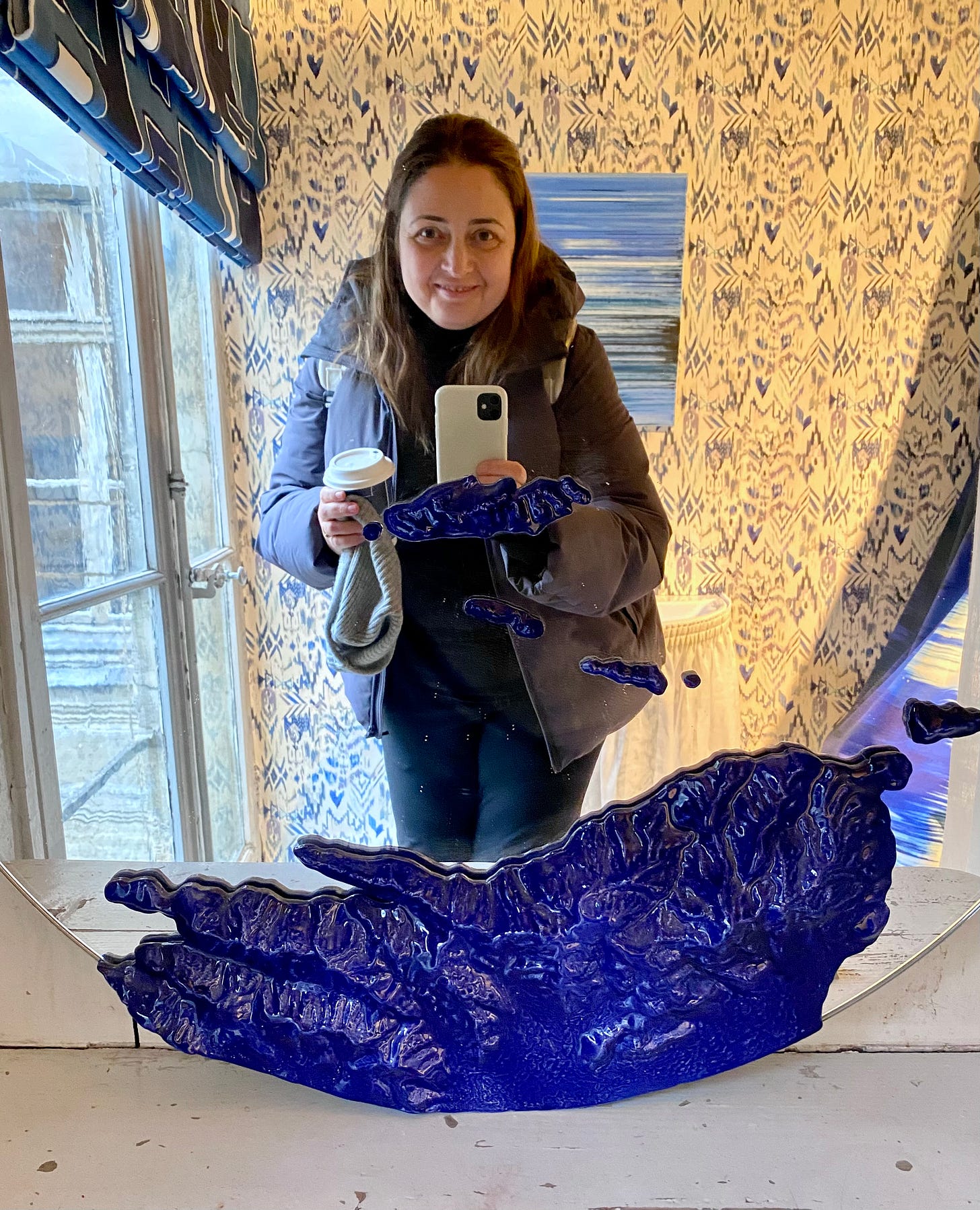
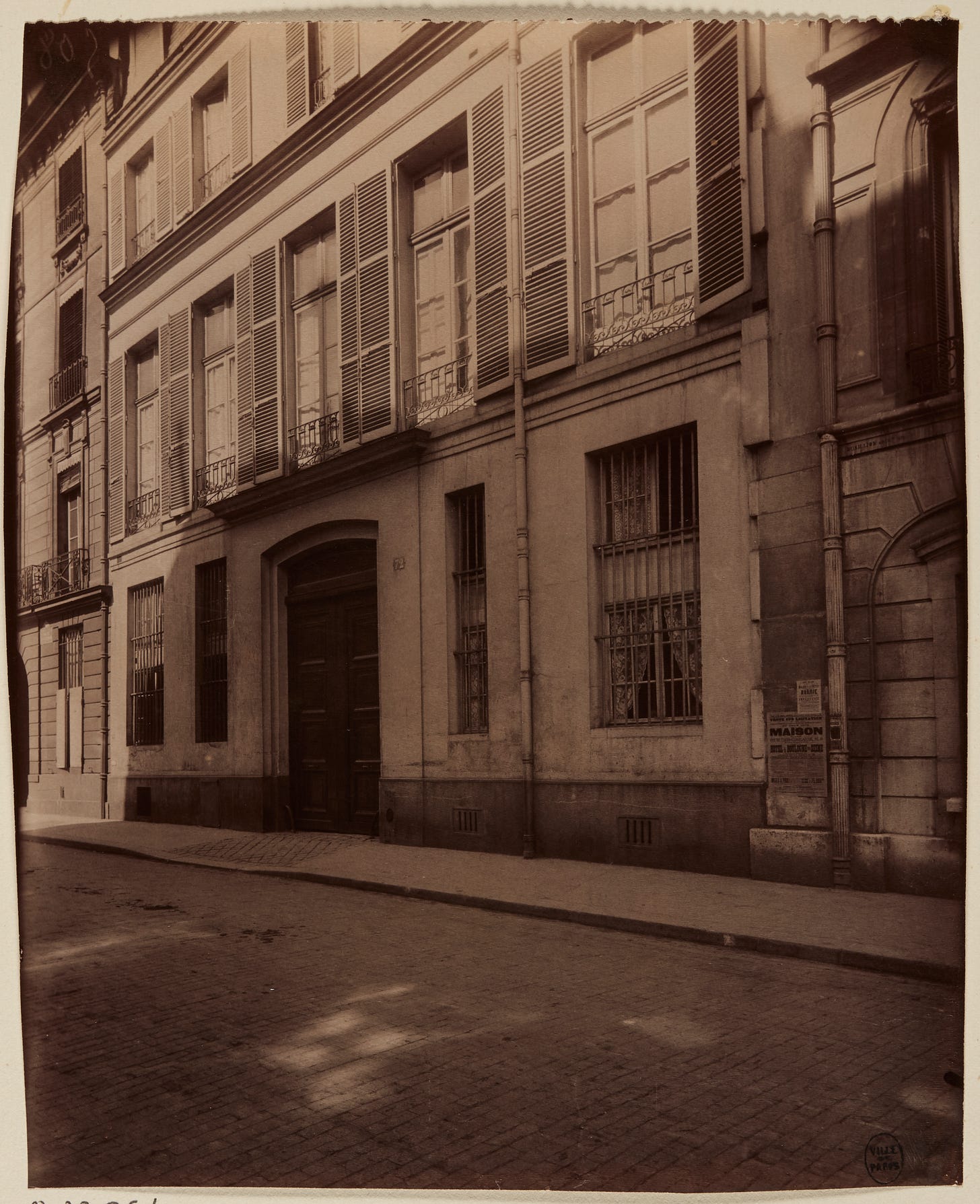
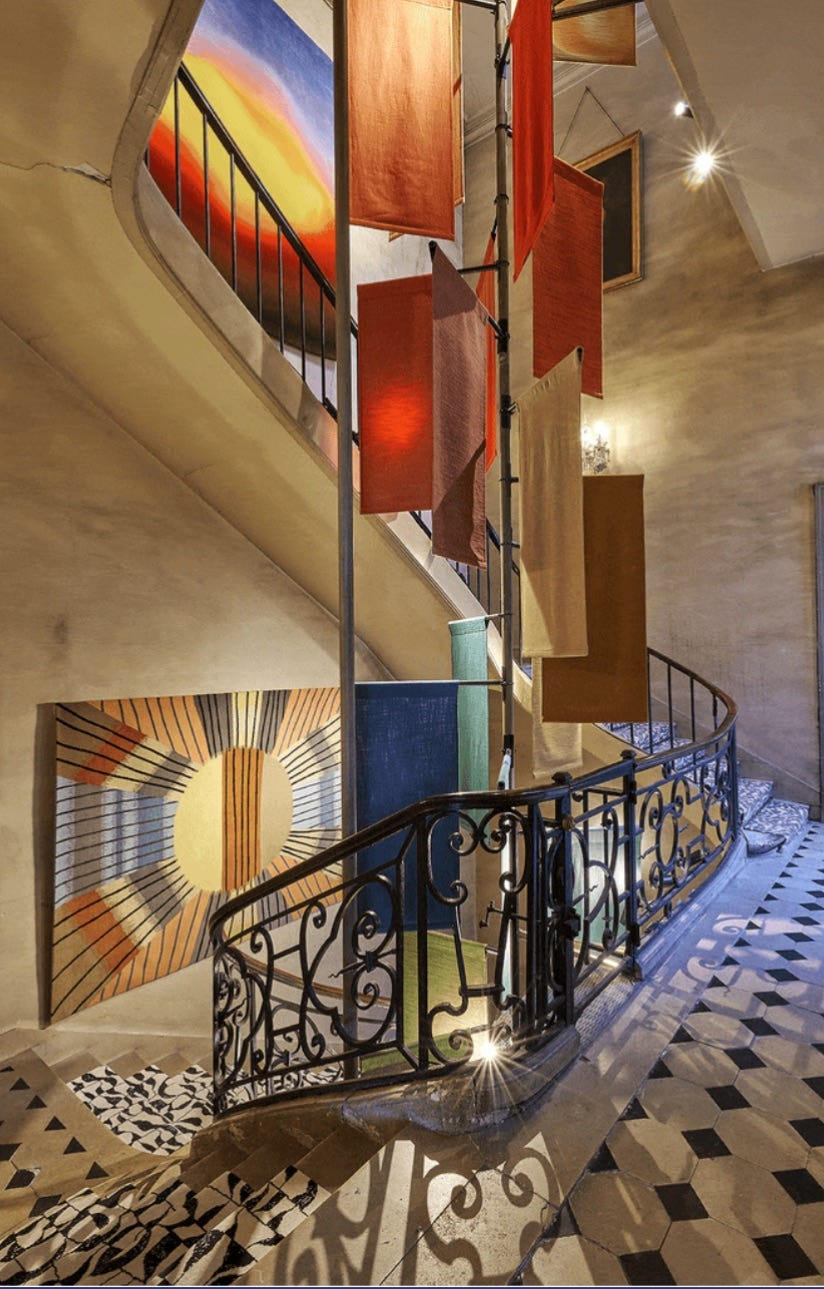
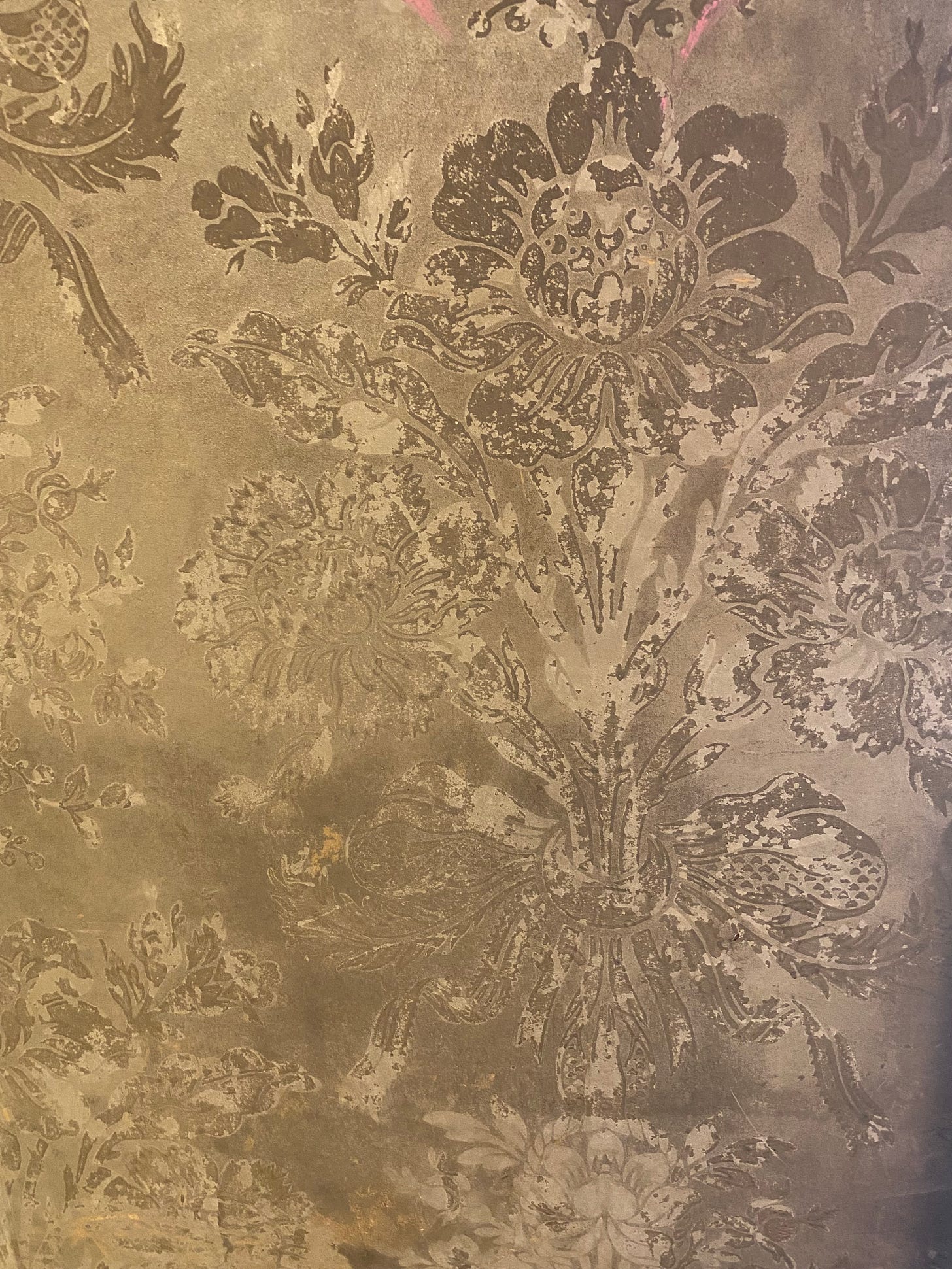
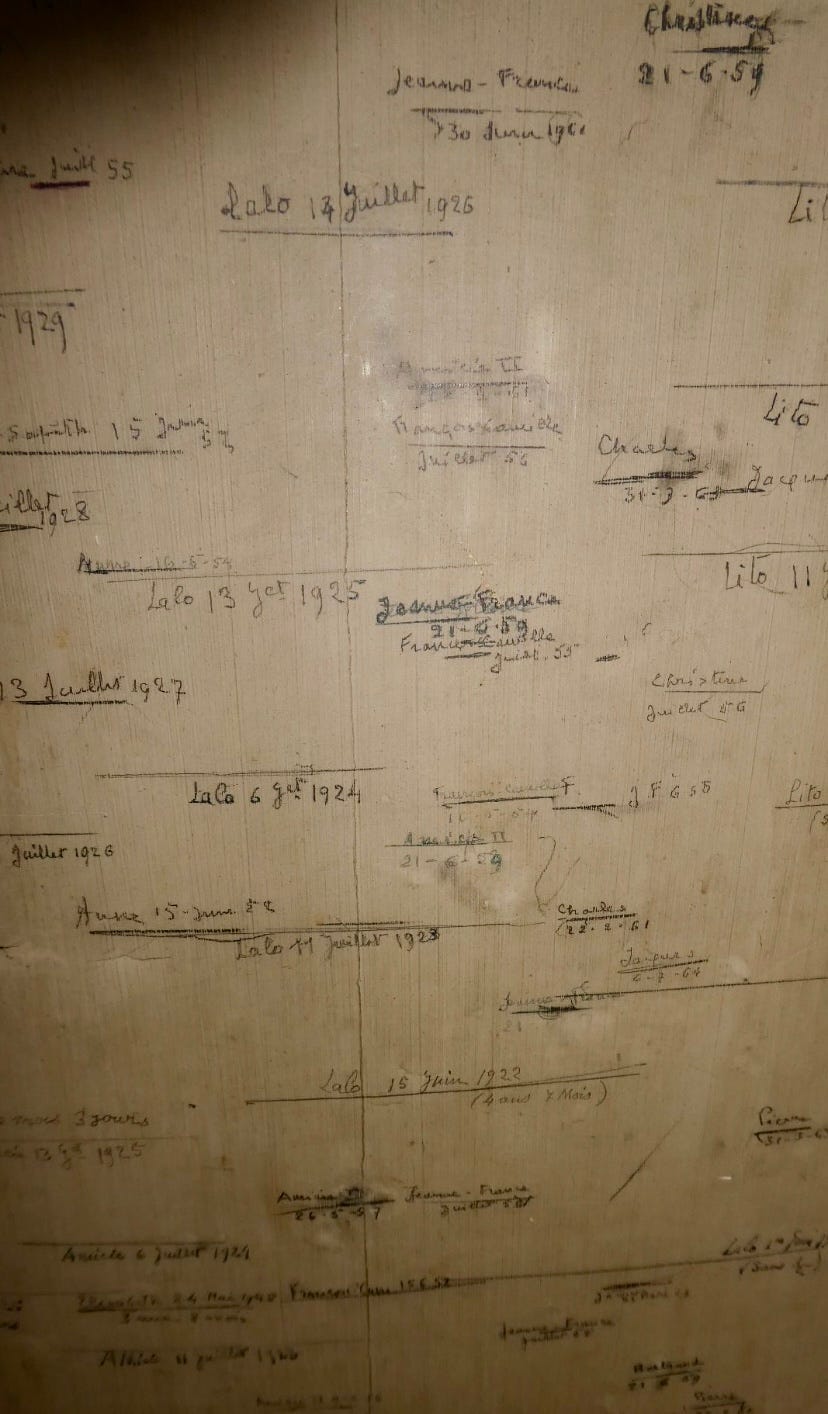
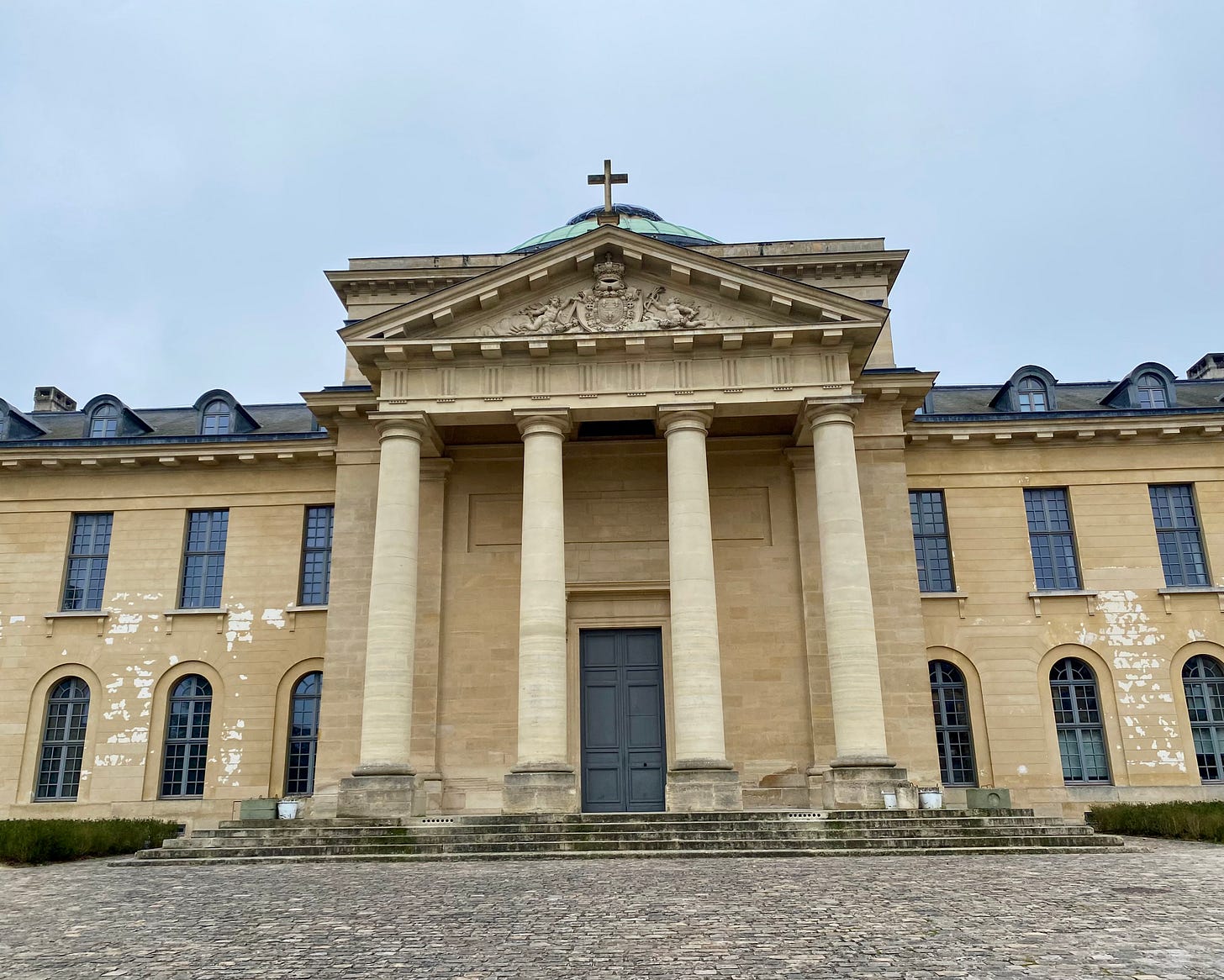
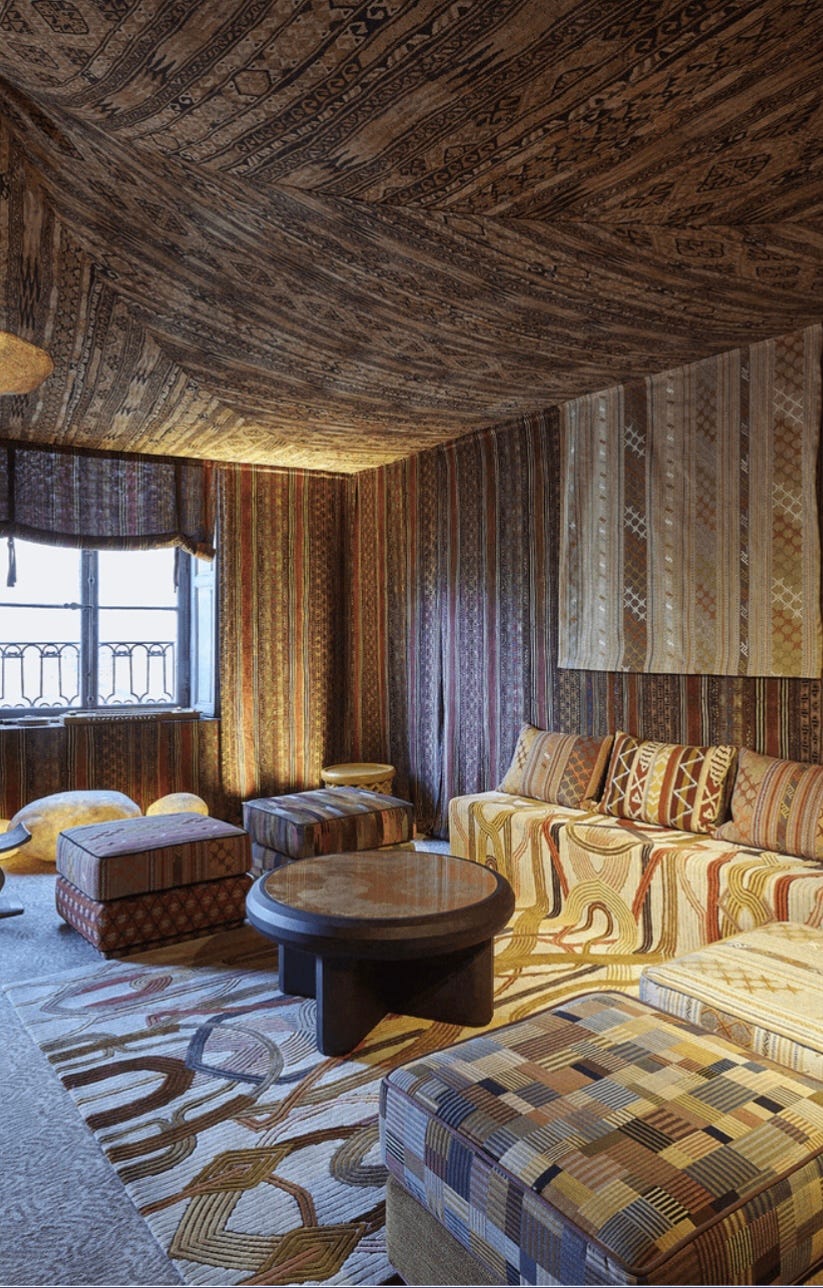
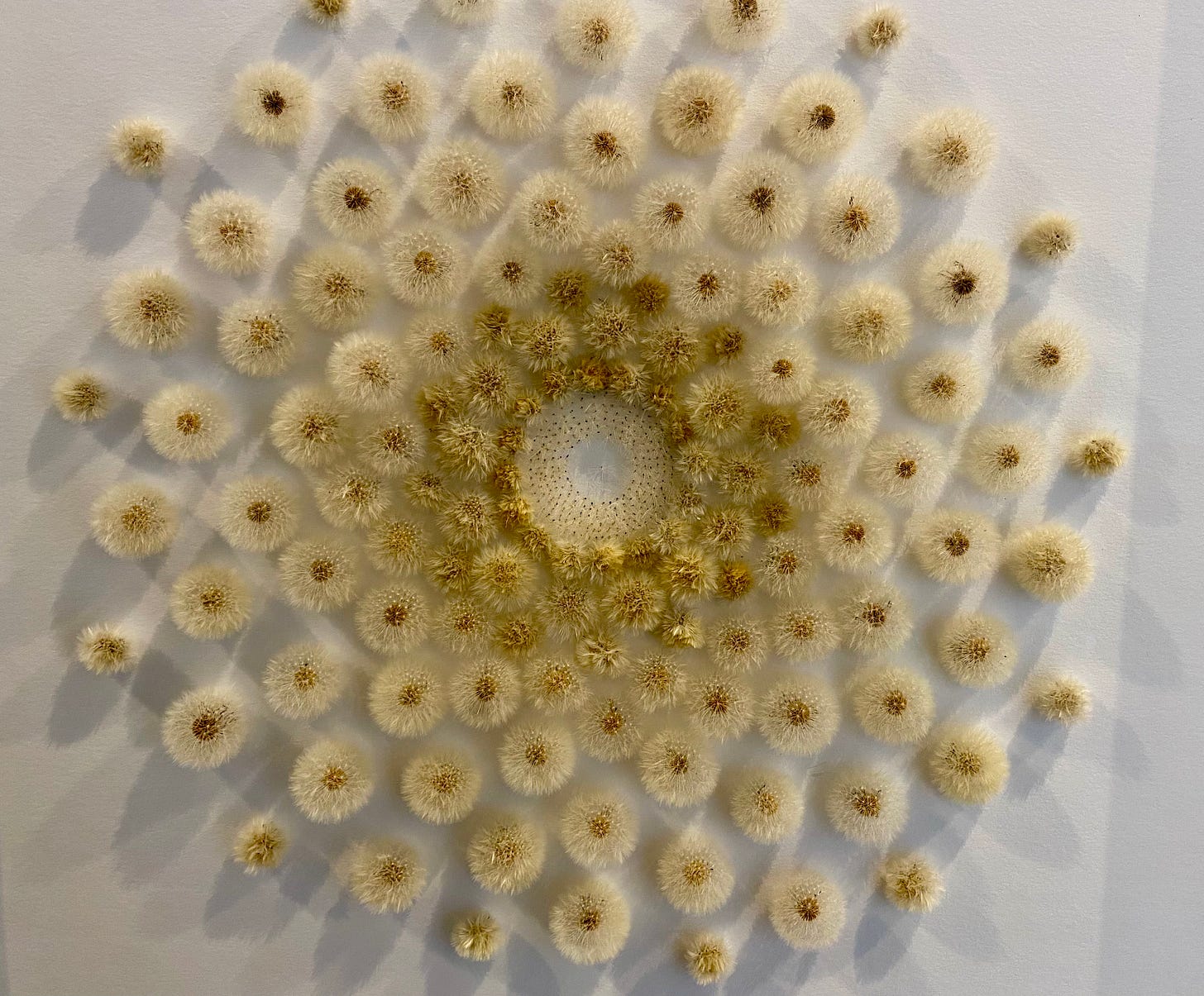

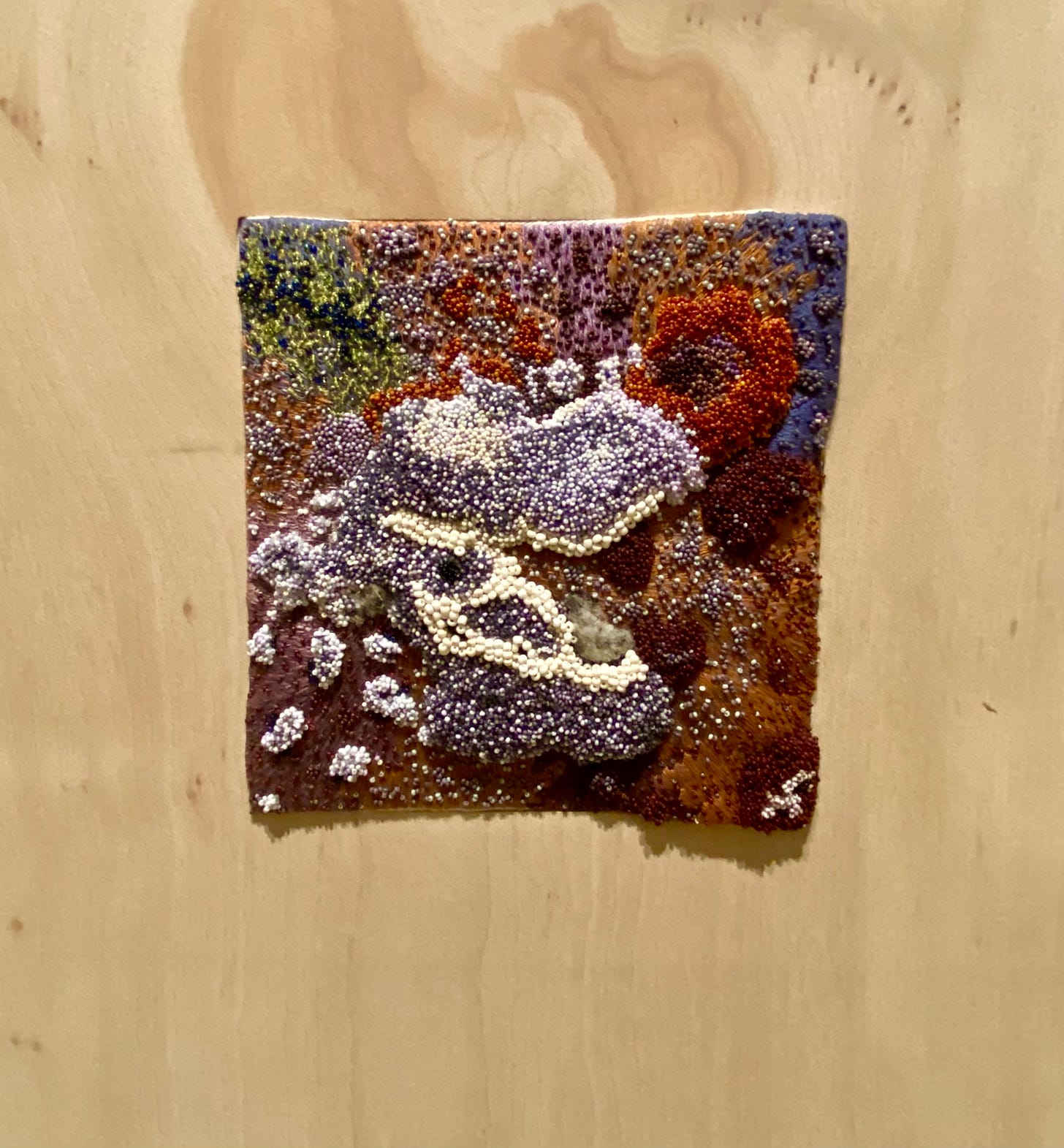
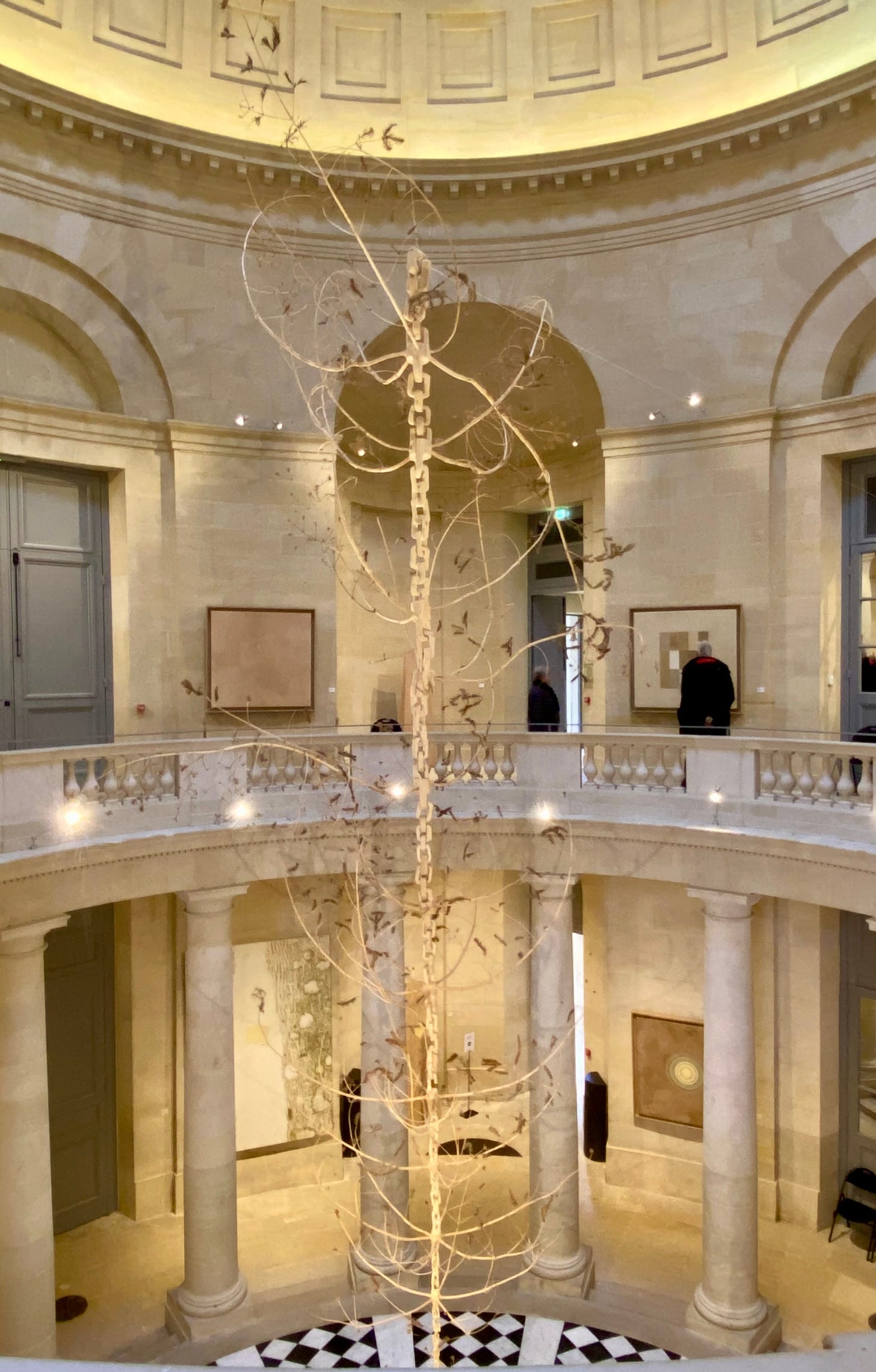
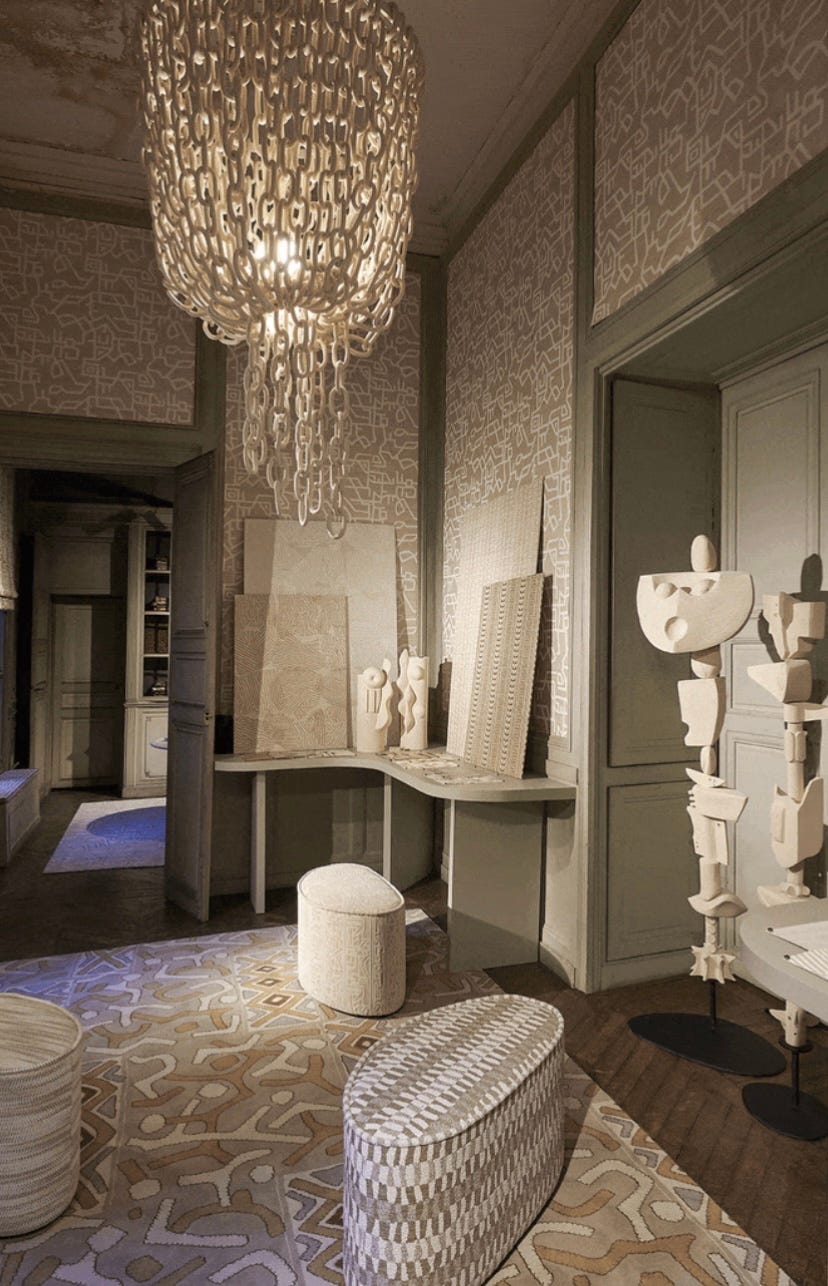
What fascinating places. I love to see houses that reveal their past lives. The children's details are so touching. I loved too the lichen embroideries which are so beautiful.
Like you, I enjoy visiting art exhibitions and when the setting is an old building there is double the joy! I liked particularly the bedouin tent-style display of seating with carpet playing an important role in providing comfort. Thanks for sharing these visits with us Dacha.